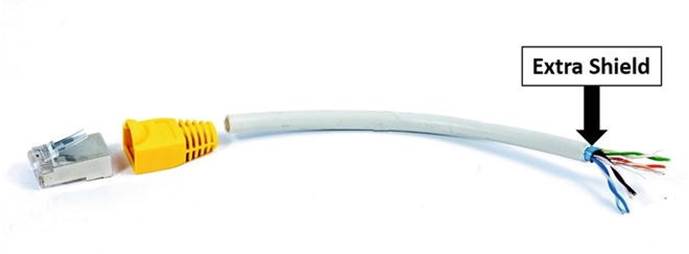The physical medium, also known as transmission media, refers to how data is transferred across networks. You can think of it like a highway that connects different places, allowing data to travel from one point to another. While transmission media enables data to move from the sender to the receiver, it does not guarantee that the data will arrive. There are two main types of media: solid and wireless. Examples include copper cables and optical fiber. Data can be sent through various types of cables, such as coaxial cables, waveguides, or twisted pair wires.

When data is sent from the sender to the receiver, it is first converted into binary numbers. Then, a carrier signal is adjusted according to the binary data. At the receiving end, this signal is converted back into binary numbers and then decoded. In simple terms, the transmission medium is the path that signals take for data communication. Transmission media can be divided into two categories:
- Guided: Data is sent as waves along a solid medium (also called bounded).
- Wireless: Data is sent using antennas (also called unbounded).
Copper wire is one of the most common types of transmission media used in computer networks. It can carry data over long distances while using low power. Fiber optic cable is another popular medium for long-distance communication. This type of cable is made of thin glass tubes that reflect light to transmit data. Fiber optic cables have advantages over copper wires, such as higher data rates and the ability to transmit data over longer distances without needing repeaters, which can fail. Fiber is also less affected by electromagnetic interference (EMI), making it more reliable.

There are two main types of fiber optic cables:
- Multi-mode (MM): This type can be either 62.5 microns or 50 microns in diameter and is used for shorter distances, up to 2 kilometers.
- Single-mode (SM): This type has a diameter of 9 microns and is used for longer distances, capable of carrying signals over several kilometers.
Examples of wireless signals include microwave, radio, and infrared.
Types of Transmission
There are three types of transmission methods:
- Simplex: Data can only be sent in one direction; one device is the sender and the other is the receiver.
- Half-duplex: Both devices can send data, but only one at a time.
- Full-duplex: Both devices can send and receive data at the same time.
Cables
| Category | Maximum Data Rate | Applications Used For |
| CAT 1 | <1 Mbps | Analog voice (POTS), basic rate ISDN |
| CAT 2 | 4 Mbps | Token ring networks |
| CAT 3 | 16 Mbps | Voice and data, and basic telephone service |
| CAT 4 | 20 Mbps | Used for 16 Mbps token ring |
| CAT 5 | 100 Mbps – 1 Gbps | 10Base-T, 100Base-T (Fast Ethernet), GigE, FDDI, 155 Mbps ATM |
| CAT 5E | 100 Mbps | FDDI, ATM |
| CAT 6 | >100 Mbps | Broadband applications |
| CAT 7 | Emerging technology | GigE plus |
Network cabling is essential for any network. This section covers different types of cables and their purposes. The main types of transmission media are twisted pair, coaxial, and fiber optic cables. The choice of cabling depends on factors like traffic needs, network layout, cost, maintenance, and network size.
Twisted Pair Cable

Twisted pair cables consist of two or more pairs of wires twisted together. They are usually less expensive than fiber optic or coaxial cables. An Ethernet cable, for example, has four pairs of twisted wires that are color-coded: blue, brown, green, and orange. Twisted pair cables can connect to registered jack (RJ) connectors or be hardwired to devices. The most common connector today is the RJ45, which is larger than the RJ11 connector used for analog phones. Your laptop or computer typically has an Ethernet port that accepts RJ45 connectors. Each pair of wires includes one solid and one striped wire, with the following color codes:
- Blue
- White/Blue
- Orange
- White/Orange
- Brown
- White/Brown
- Green
- White/Green
There are two main types of twisted pair cabling:
- Unshielded Twisted Pair (UTP): This is the most widely used type of copper cabling in networks today. UTP is relatively inexpensive but does not protect against electrical interference. Its bandwidth is also limited compared to other cables.
- Shielded Twisted Pair (STP): This type is used in networks that require faster data rates. STP is similar to UTP but has an extra metal shield around the wires to protect against EMI. The wires can be shielded individually or as a group.
A table of twisted pair category (CAT) ratings shows the maximum data rates they can support and the applications for each category. For example, CAT 5E supports up to 155 Mbps, while CAT 7 can support up to 100 Gbps at 15 meters and 40 Gbps at 50 meters.
